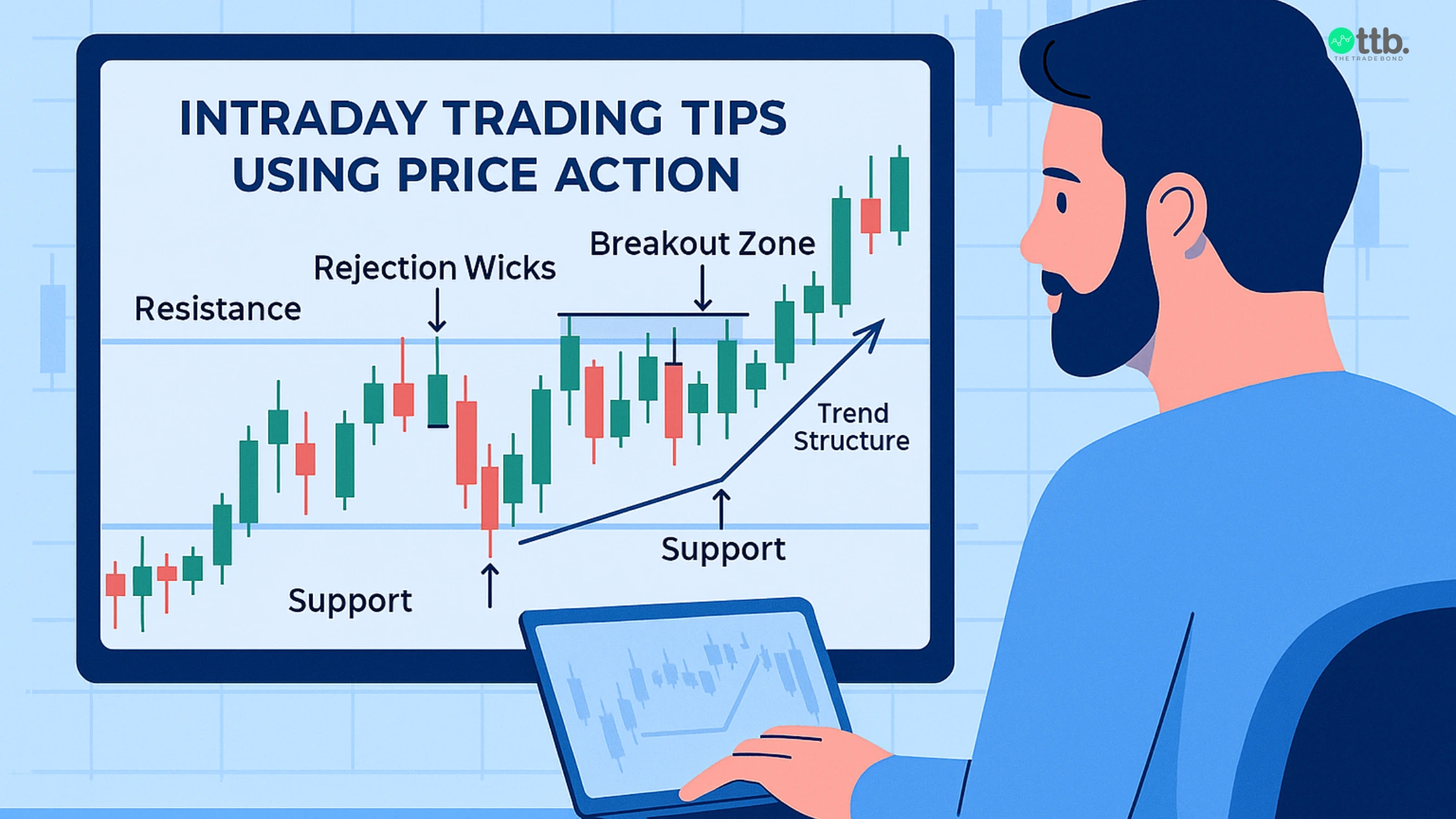Intraday Trading Tips Using Price Action: Simple Techniques That Work

Intraday Trading Tips Using Price Action: Simple Techniques
Intraday trading moves fast, but price action keeps the approach simple, structured, and easy to understand. By reading charts without overloading indicators, traders can study market behavior, spot cleaner entries, and manage traders with clarity. These intraday tips using price action help traders stay aligned with market patterns and make more informed decisions. Learn from a genuine intraday tips provider, or explore guides such as how market structure helps you select better intraday trades.
Why Price Action Matters in Intraday Trading
Price action reflects how buyers and sellers interact at every level. For intraday traders, this becomes valuable because it highlights short-term momentum, rejection zones, breakouts, and reversals. Unlike indicator-heavy setups, price action works directly on price behavior. Also, it is suitable for traders learning intraday trading tips for beginners.
When combined with structured learning like intraday trading tips for small-capital traders in India. Because it becomes easier to understand why the market shifts direction during the day.
Key Price Action Signals Every Intraday Trader Should Know
A few signals every intraday trader frequently use to guide intraday trading decisions:
Break of structure (BOS):
Indicates a potential shift in market direction.
Rejection wicks:
Suggest hesitation near certain levels.
Inside bars and outside bars:
Show compression or expansion of volatility.
Engulfing candles:
Highlight sudden strength from buyers or sellers.
These signals help intraday traders find out the flow before executing trades, that something even intraday service providers focus on when educating clients.
Using Support and Resistance for Intraday Price Action Trades
Support and resistance act as a backbone of many intraday trading tips using price action. Also, these levels help traders find where the market has reversed previously. When price revisits these levels, traders can watch for confirmation signals such as pin bars, higher lows, lower highs, or consolidation breakouts.
Check out our blogs, like the Bank Nifty tips provider and stock market advisor pages, which can explain how these levels behave across different indices and instruments. Support and resistance are also useful for scaling into or out of trades based on changing market behavior.
Candlestick Patterns for Intraday Trading Tips Using Price Action
Candlestick patterns are a key part of intraday tips. They help traders understand traders’ psychology within seconds. Below are some of the commonly watched patterns include:
- Pin bars showing rejection
- Dojis showing indecision
- Hammer and inverted hammer at exhaustion levels
- Bullish and bearish engulfing patterns
- Morning and evening formations during reversals
These patterns appear around key zones discussed in guides, such as the best timeframes to analyze Nifty movement, helping traders fine-tune their entries.
Avoiding Traps in Intraday Trading Tips Using Price Action
False breakouts and liquidity traps catch many new traders. Markets push above a level only to reverse shortly after. Intraday trading requires patience, so traders wait for confirmation, such as a stable candle close, to reduce emotional entries.
A genuine intraday trading tips provider always highlights the importance of reading context instead of reacting impulsively. Studying market structure pages and price behavior can help traders identify these traps early.
Risk Control for Intraday Trading Tips Using Price Action
Risk control is an essential part of intraday trading. Simple practices include setting clear exit levels, keeping a fixed per trade, and avoiding oversized positions. For beginners, this is the difference between a disciplined trading plan and unpredictable results.
Following structural insights from resources like intraday trading tips for small-capital traders in India helps traders understand how to manage exposure when capital is limited.
Common Errors in Intraday Trading Tips Using Price Action
Below are the common repeated errors in Intraday trading tips include:
- Entering before confirmation
- Ignoring broader market sentiment
- Trading too frequently
- Misreading reversal signals
- Relying only on indicators without understanding price behaviour
These mistakes affect both beginners and experienced traders. Staying consistent with price action principles reduces confusion and keeps decisions aligned with market flow.
The Trade Bond's View
At The Trade Bond, price action is more than a technique it’s a structured way to understand how the market behaves each day. When traders follow clear setups, respect market levels, and read candlestick behavior, intraday trading becomes more systematic. Intraday trading tips using price action support traders in staying grounded, responding to the market instead of predicting it. Also, building confidence through clarity and consistency.
FAQ's
Can beginners use price action for intraday trading?
Yes, beginners can use price action because it focuses on chart movement instead of complex indicators. It helps new traders observe how the market behaves in real time.
How does risk control fit into price action trading?
Risk control ensures that traders define their exit levels, keep consistent position sizes, and avoid impulsive entries. Price action makes this easier because levels and signals are visible on the chart.
What is the simplest way to start trading with price action?
Start by marking key levels, identifying the trend, and waiting for clear candlestick signals. Break-and-retest setups and basic rejection patterns are beginner-friendly approaches.
